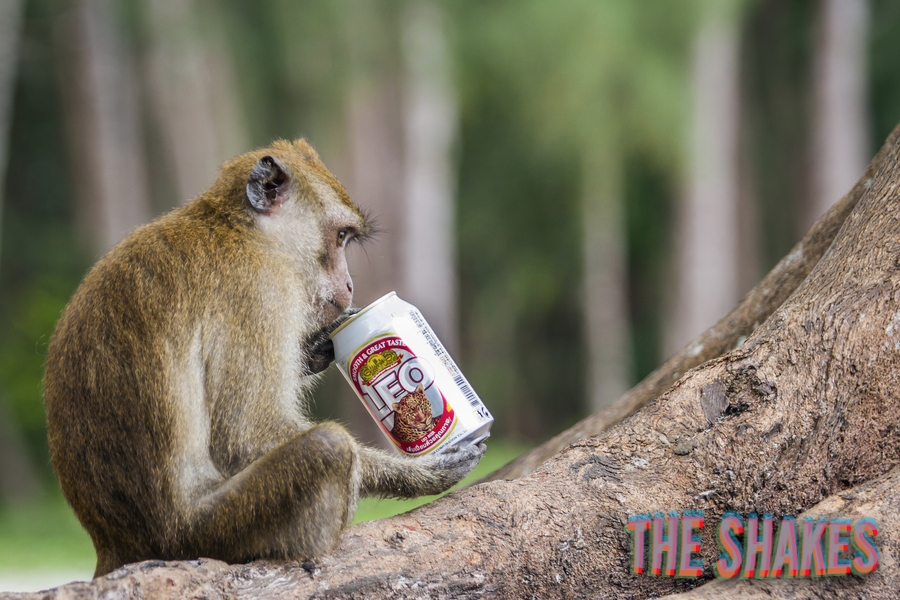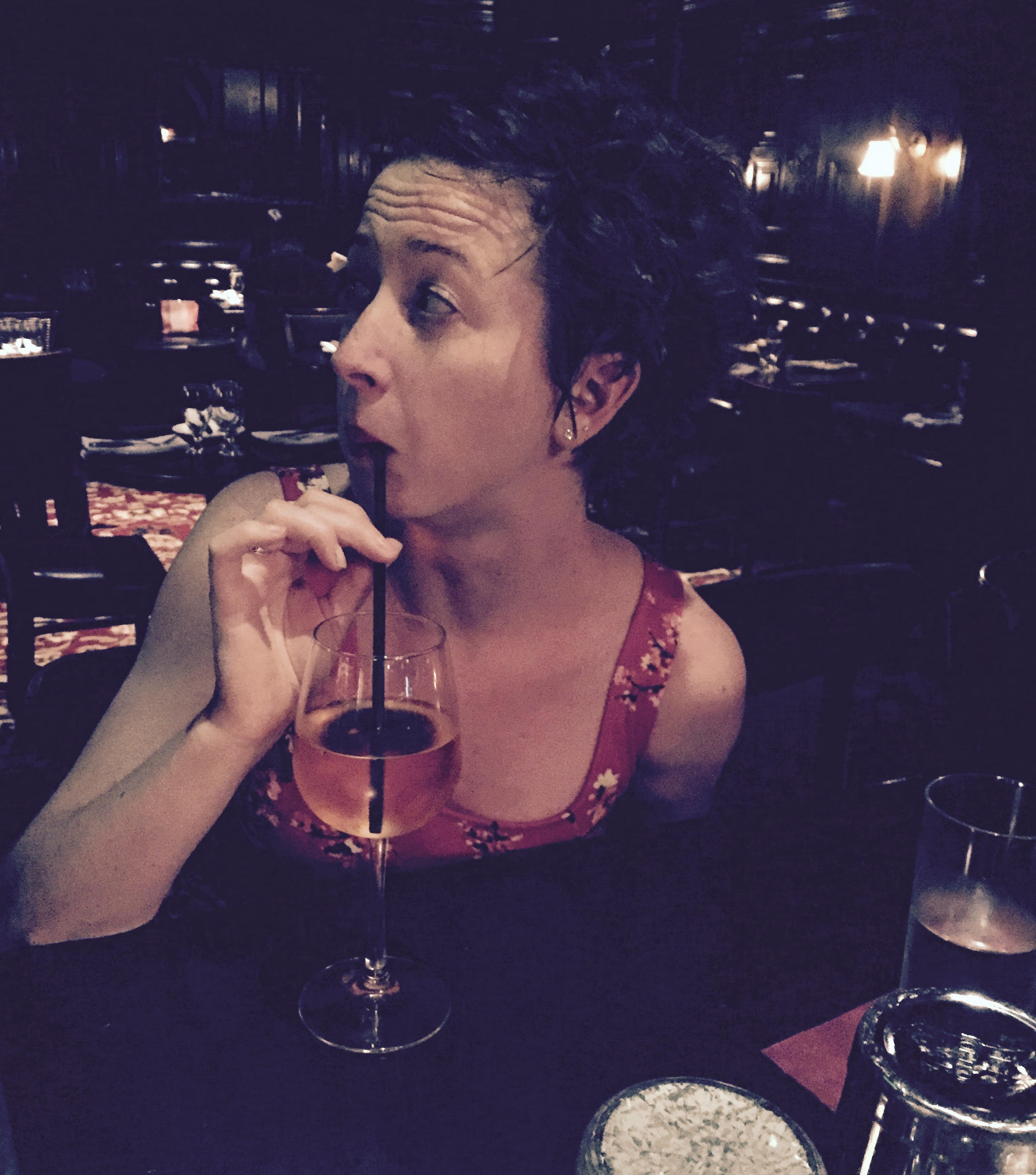Psychopharmacologist Ronald K. Siegel may not have coined the term party animal, but he certainly provided rock-solid evidence for whoever did. Over the course of 20 years, Siegel and a team of researchers at UCLA’s Department of Behavioral Sciences collected thousands of anecdotes about intoxicated animals from eyewitnesses, local legends and archived documents. And when that wasn’t enough, he and his team traveled all over the world to watch different species get drunk and/or stoned.
Somewhere along the line, he even became an animal drug pusher — giving monkeys, apes, rats and other small mammals injections of, or access to, tobacco, psilocybin mushrooms, cocaine and DMT to see what chemical highs disagreed with his subjects, and which ones they couldn’t quit. (Don’t bother calling PETA, it’s way too late now.)
He compiled his findings in the book Intoxication: The Universal Drive for Mind-Altering Substances. First published in 1989, with a second edition released in 2005, Intoxication remains the deepest dive to date into animals’ need for speed, coke, opiates, alcohol, marijuana and hallucinogenic plants. It also makes a very important point: Getting fucked up is an impulse universal to everyone — and every specie. “Our nervous system, like those of rodents and primates, is arranged to respond to chemical intoxicants the same way it responds to rewards of food, drink and sex,” Siegel wrote. “These stories will show what intoxication is, why we seek it, its amazing benefits, its destructive consequences when abused and why we have much to learn from other animals.”
I stumbled upon Intoxication while following up on something Rubin Naiman, a sleep and dream specialist at the University of Arizona Center for Integrative Medicine, told me in an interview about what alcohol does to your sleep (and your dreams):
“Human consciousness inherently wants to expand,” he said. “We see it in kids — they spin around until they fall over, and are forced to look at the world upside-down to change their perception. This is an innate desire.”
How innate? I wondered.
Siegel’s book provided the answer.
Here are the highlights — truly twisted tales of the lengths animals go to get wasted and how that primal urge isn’t much different from our own.
One thing is for certain: You’ll never look at ants the same way again.
Polly Wanna Holly Berry?
California holly has glossy green leaves and produces bright scarlet berries that provide little in the way of sustenance for humans. These berries, however, are gorged upon by robins headed north from their winter vacations in Southern California or Mexico. But it’s not for the taste: Nope, instead, they alter the minds of the robins so much that, during Siegel’s decades of research, various “drunk tanks” were set up in California towns as places for residents to drop off inebriated birds they found stumbling through their yards before the neighborhood cats could get to them.
In response to a news story about the birds binging on berries and then becoming confused (to the point that some would fly into cars or houses), Siegel set up camp near a patch of California holly and recorded his observations:
12:10 p.m.: There are two or three thousand birds swooping down from the sky. They dive directly toward my Jeep and then start mobbing the trees. The thin branches start bending under the weight of the 50 to 100 birds on each tree.
12:17 p.m.: Berries are disappearing into beaks that seem to have no bottom. Ordinarily, four or five berries might be a good meal. Here, individual birds are gorging on as many as 30. As the branches wobble, so do the birds and they start falling. Four birds are staggering on the ground, unable to fly.
12:38 p.m.: The tipsy birds can be easily approached and handled. They are almost tame.
12:45 p.m.: I am driving in low gear to the edge of the field. There are thumps on the roof and then a robin smashes into the windshield.
1:05 p.m.: Several birds are stunned momentarily when they fly into the windows and sides of houses. On the side of the road I find four more birds that have been killed in collisions with cars.
Because the berries were fresh and ripe and not fermenting, it can’t be said that the robins were drunk per se. But they were definitely intoxicated from an unknown chemical in the berries that fucked up their bird brains and demanded that they come back for more.
Like Garfield to Lasagna
If you’ve ever owned a cat, you know that catnip, a fern-like plant by the name of Nepeta cataria, is both an incredible treat and an epic distraction for felines. And while what catnip actually does for cats is up for debate — is it an upper or a downer? — “cats are attracted to catnip purely for reasons of chemical pleasure,” according to Siegel.
When cats — domestic or otherwise — encounter catnip, which is native to much of Europe, the Middle East and Central Asia, their first reaction is to sniff the plant. Next, they’ll lick or chew the leaves, before hitting a 1,000-yard stare into space. This response, per Siegel’s research among not only cats but dozens of other species’ experience with hallucinogenic plants (e.g., mountain goats, llamas, dogs and jaguars), is a key marker of hallucination. (Fun fact: Humans can also trip on catnip by smoking the leaves.)
“Do cats hallucinate on the plant? It could be argued that we have no way of knowing whether another animal is hallucinating,” Siegel wrote in Intoxication. “But much of the behavior of cats under the influence of catnip suggests they are having false perceptions. When cats gaze vacantly in no particular direction, their accompanying actions indicate that they are seeing things.”
They love the feeling, too. After an initial exposure, the large cats of the Osaka Zoo in Japan were so eager for more catnip that they “would ignore whatever else they were doing — eating, drinking, even having sex — whenever the chemicals were made available,” Siegel observed.
Rudolph the Glassy-Eyed Reindeer
Reindeer are drawn to mushrooms of all varieties, but their favorite is the red-capped, white-flecked Amanita muscaria, or fly agaric, named for its stupefying effects on flies that drink its juice.
It, however, has a rather different effect on large mammals, such as reindeer and humans: “Domesticated reindeer become unmanageable in their greed for this mushroom and act as if they are drunk, running aimlessly about, making noise, head-twitching,” Siegel wrote. “They may be no different from the Norse Vikings who ate the fly agaric to produce the ecstatic reckless rage for which they earned the nickname ‘Berserkers.’”
Yet while vikings reserved tripping on fly agaric for war and battle (which, given the history of the vikings, may have meant dosing fairly regularly), reindeer will get at this hallucinogenic source by any means necessary — even if it involves drinking the urine of humans who have had some bites of the shroom. (Such urine is filled with clumps of muscimol, a metabolic byproduct of ibotenic acid, the key psychoactive compound in the mushrooms.)
Reindeer have been known to become so competitive and violent over access to human-made yellow snow “that travelers to the area have been warned about the danger of urinating in the open tundra when there are reindeer around,” Siegel wrote. After all, you don’t want a 400-pound mammal charging at you when you’ve got your dick in your hands.
The Ants Go Marching (and Marching, and Marching…)
In addition to being industrious little creatures, ants are also rather good hosts. Case in point: Many species live in symbiotic relationships with various types of beetles.
The relationship between the yellow ant (aka Lasius flavus) and the Lomechusa beetle, however, is dark. In return for being provided with food and care by the ants, the beetles allow the ants to lick their abdominal secretions. These aren’t any ol’ abdominal secretions, though. One lick and worker yellow ants, according to Siegel’s observations, become totally disinterested in anything but getting their next fix from the belly of the beetle. “Consequently,” he wrote, “the ants allow more beetles to move into the colony,” increasing the supply of the intoxicant and wreaking havoc on the colony. “Excessive intake of the intoxicant can cause such mania in the colony that female ant larvae become damaged and fail to develop into reproductive queens,” he added.
Basically, the ants’ addiction to beetle secretions can ultimately cause a full collapse of the colony.
There’s a metaphor in there somewhere for the rest of us.

